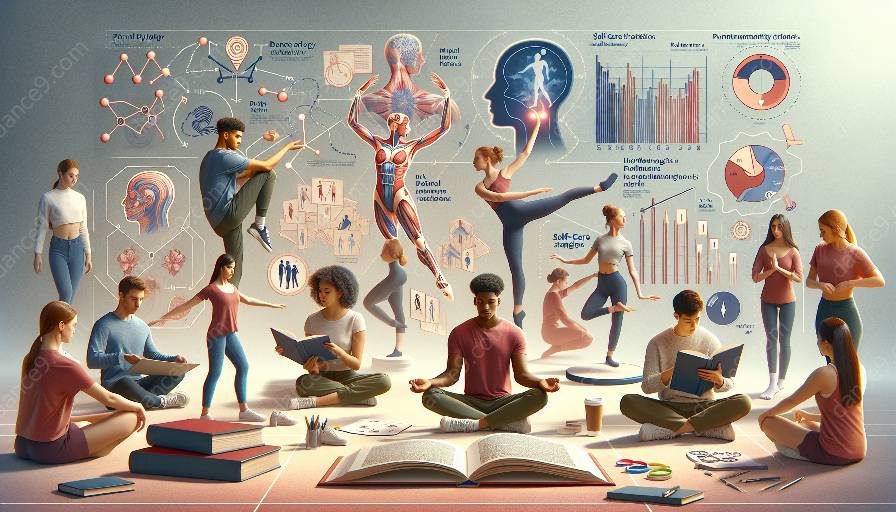Dance is a physically and mentally demanding art form that requires significant dedication and effort. Dancers often push their bodies to the limit, leading to fatigue, injury, and burnout. It is crucial for dancers to prioritize their well-being by incorporating effective recovering and resting strategies into their routines.
Dance and Self-Care Strategies
Self-care is essential for dancers to maintain a healthy balance between physical exertion and relaxation. Here are some self-care strategies that dancers can integrate into their routines:
- 1. Mindfulness and Meditation: Practicing mindfulness and meditation can help dancers manage stress and improve mental focus.
- 2. Adequate Sleep: Getting enough rest is crucial for recovery and muscle repair. Dancers should prioritize a consistent sleep schedule.
- 3. Nutrition: Fueling the body with a balanced diet rich in nutrients is essential for dancers to maintain energy levels and support muscle recovery.
- 4. Hydration: Staying properly hydrated is vital for overall health and performance. Dancers should drink an adequate amount of water throughout the day.
- 5. Self-Reflection: Taking time for self-reflection and introspection can help dancers maintain a healthy mindset and emotional well-being.
Physical and Mental Health in Dance
Both physical and mental health play a significant role in a dancer's overall well-being. To promote health in dance, it's important to consider strategies that address both aspects:
- 1. Injury Prevention: Dancers should engage in proper warm-up and stretching routines to reduce the risk of injuries. Incorporating cross-training activities can also help prevent overuse injuries.
- 2. Rest and Recovery: Implementing rest days into the dance schedule is crucial for allowing the body to recover and prevent burnout. Utilizing techniques such as foam rolling and massage can aid in muscle recovery.
- 3. Mental Wellness: Supporting the mental health of dancers is equally important. Encouraging open communication, providing access to mental health resources, and promoting a positive and supportive dance environment can contribute to overall well-being.
- 4. Monitoring Workload: It's essential for dancers to balance their workload and avoid overtraining. Understanding when to push harder and when to rest is key to preventing physical and mental exhaustion.
Effective Recovering and Resting Strategies
In addition to self-care practices, dancers can incorporate specific recovering and resting strategies to support their overall health:
- 1. Active Recovery: Engaging in low-intensity activities such as swimming, walking, or yoga on rest days can promote blood flow and aid in muscle recovery.
- 2. Sleep Hygiene: Creating a sleep-friendly environment and establishing a bedtime routine can enhance the quality of sleep, allowing for better recovery.
- 3. Injury Rehabilitation: When dealing with an injury, following a structured rehabilitation plan and seeking professional guidance is essential for a safe return to dance.
- 4. Cross-Training: Incorporating activities outside of dance, such as strength training and flexibility exercises, can help prevent muscle imbalances and improve overall physical fitness.
- 5. Mental Rest: Practicing relaxation techniques such as deep breathing, visualization, or taking time for hobbies can support mental rest and rejuvenation.
By integrating these recovering and resting strategies into their dance routines, dancers can prioritize their well-being, reduce the risk of injury, and enhance their overall performance. It's essential for dancers to recognize the importance of self-care, physical and mental health, and to take proactive steps to ensure a sustainable and fulfilling dance journey.


































